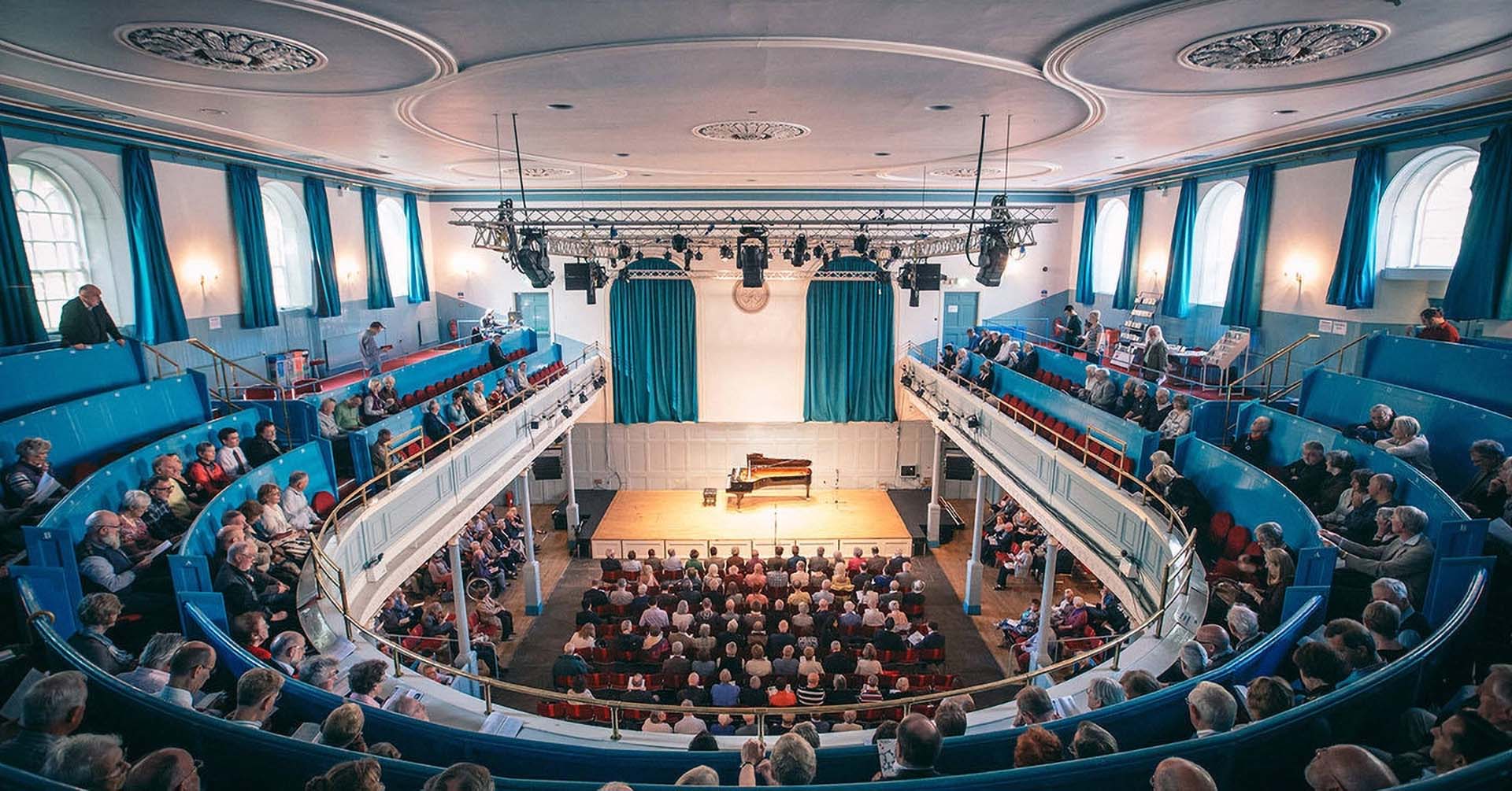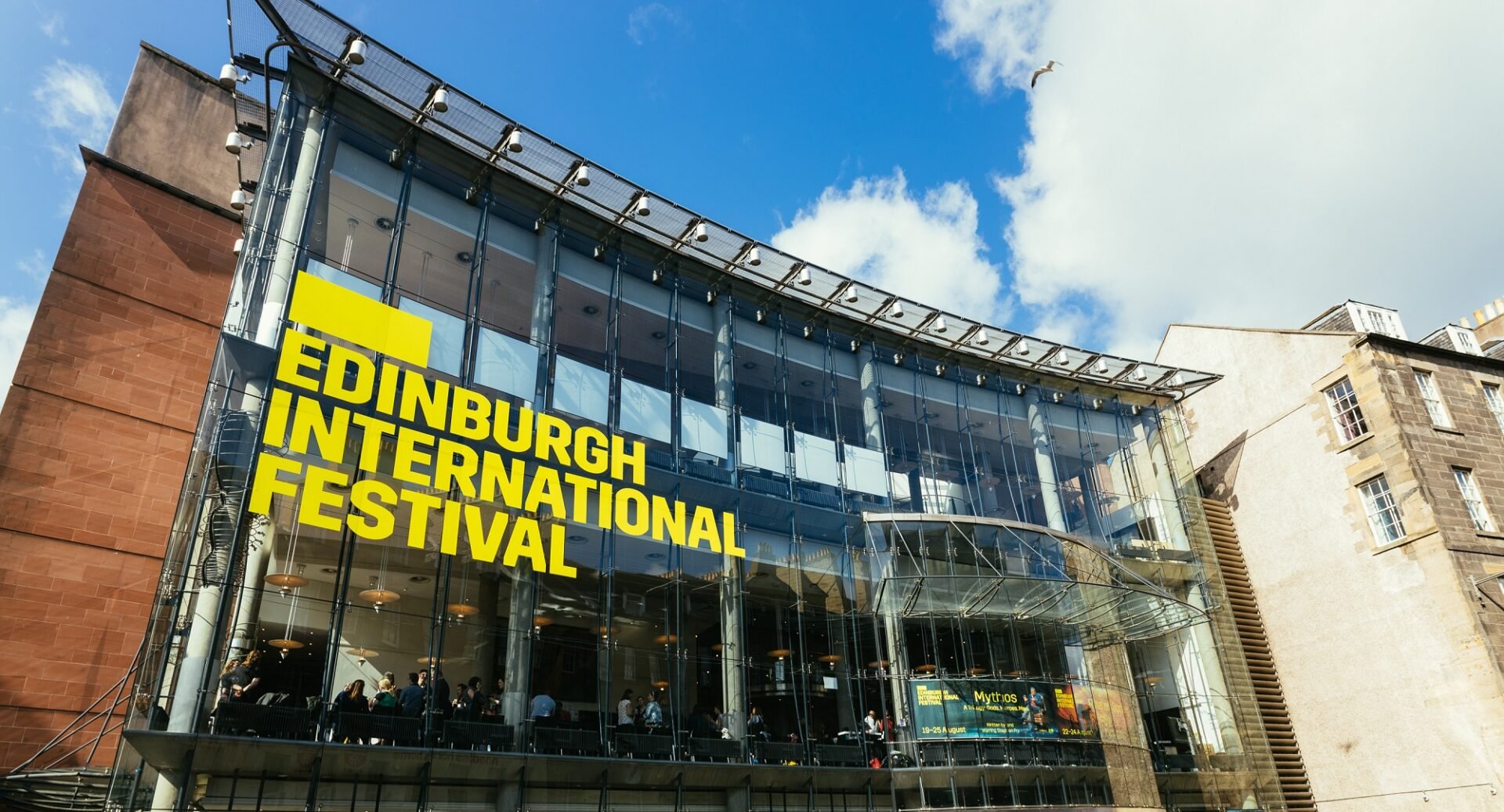Queen’s Hall, Edinburgh, 12/8/25
Following the two concerts of the NFM Leopoldinum there was a third opportunity to catch violinist Alexander Sitkovetsky in concert, as the leader of the Sitkovetsky Trio, in the Queen’s Hall concert of 12th August. The programme opened and closed with two staples of the piano trio repertoire, Beethoven’s 1808 D major, Op.70 No.1 ‘Ghost’, and Shostakovich’s 1944 No.2 in E minor, Op.67. Before and after the interval were programmed two works by female composers, redressing the unjustifiable imbalance of centuries, one piece at a time. Cécile Chaminade’s 1887 No.2 in A minor, Op.34 was followed after the interval by the UK Premiere of a Sitkovetsky Trio commission from Iranian composer Mahdis Golzar Kashani, ‘To the Pointer Stars’ (2024). Turnout in the Queen’s Hall was entirely satisfactory.
Beethoven’s 3-movement ‘Ghost’ Trio is prime “middle period” Beethoven, named for its spooky slow movement. The spirited, vigorous and richly-scored first movement received an interpretation that was dramatic and characterful, with flawless and engaging phrasing and unfailing dynamic balance. The Holy Grail of trio playing – three individual characters, but perfectly blended – was realised. The ‘Ghost’ movement was no less dramatic. A sudden unearthly piano chord that would not be out of place in Bartók ‘night music’ makes 3 appearances, corresponding neatly with the 3 apparitions of the dead king in Hamlet, each being built to by a spooky slow walk in near darkness. The chromatic ending was spine-tingling. The finale was as happy and carefree as you like, with a shared spirit of playfulness and some lovely glittering playing from pianist Wu Qian. Top quality chamber playing from the experts.
The Chaminade was a first hearing for me and it is another 3-movement gem. A spirit of A-minor adventurousness, as if setting out on a grand journey, permeates the confident first movement, with very Brahmsian romanticism in the sound-world. The slow movement is an idyllic major-key love duet between violin and cello, the piano setting the mood and proposing a new melody and rippling accompaniment for the second half of the movement. Back in A-minor for another hazardous intrepid expedition in the finale. Edge-of-seat stuff with a thrilling impassioned coda. Persuasive advocacy for a super piece that should be heard more often.
Cellist Isang Enders introduced the Kashani with the aid of a radio-microphone. In the composer’s words, the “piece is dedicated to the memory of those who were sacrificed for defending freedom of thought … inspired by those who fell in the fight … to the ‘Pointer Stars’”. Kashani had first-hand experience of the suppression and elimination of intellectuals and creatives by totalitarian regimes. Her piece advanced through evocative phases with different metres: an eerie nocturnal stealth in 3, faster and conspiratorial in 7, spooky glissandi and tremolos in a scampering 8, and a dreamy morendo close. Compact and compelling music.
The Shostakovich, one of my favourite trios, did not disappoint, but brimmed with character. The eerie slow fugal opening transitioned into a song-like melody and then some “forced jollity” which did not conceal the underlying numbness. If the scherzo is a hectic waltz, it is a vodka-fuelled one. Shortly into the movement, the cellist’s radio-mic, which had been laid on the stage, developed a fault and caused the speakers in the hall to erupt with crashing white noise. The offending tech was removed and the riotous scherzo was restarted with extra irreverence. The elegiac slow movement was heartbreakingly beautiful. The finale, rich in the tropes of Jewish folksong and dance, was thrillingly idiomatic, Shostakovich taking a stand against anti-Semitism. An intensely moving performance. Fabulous.
Donal Hurley


